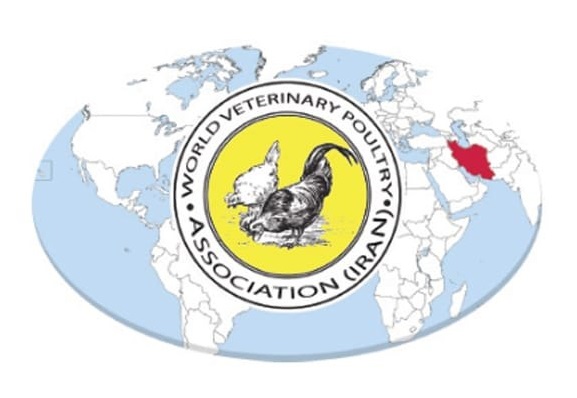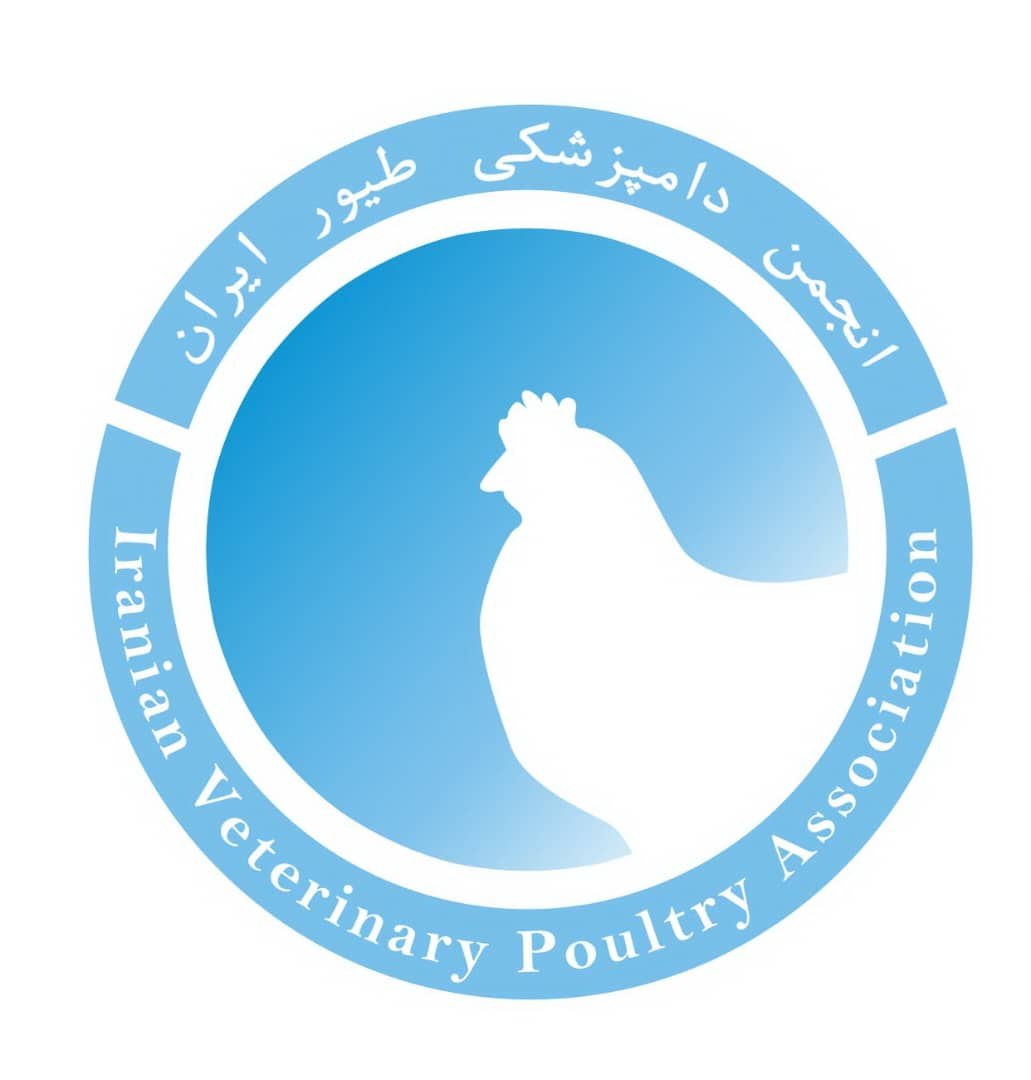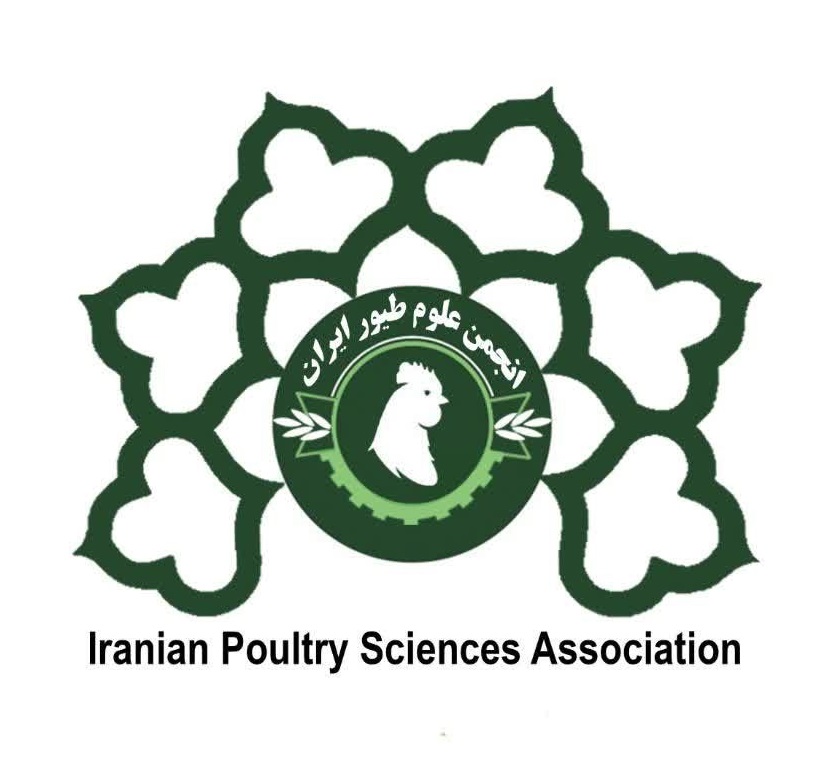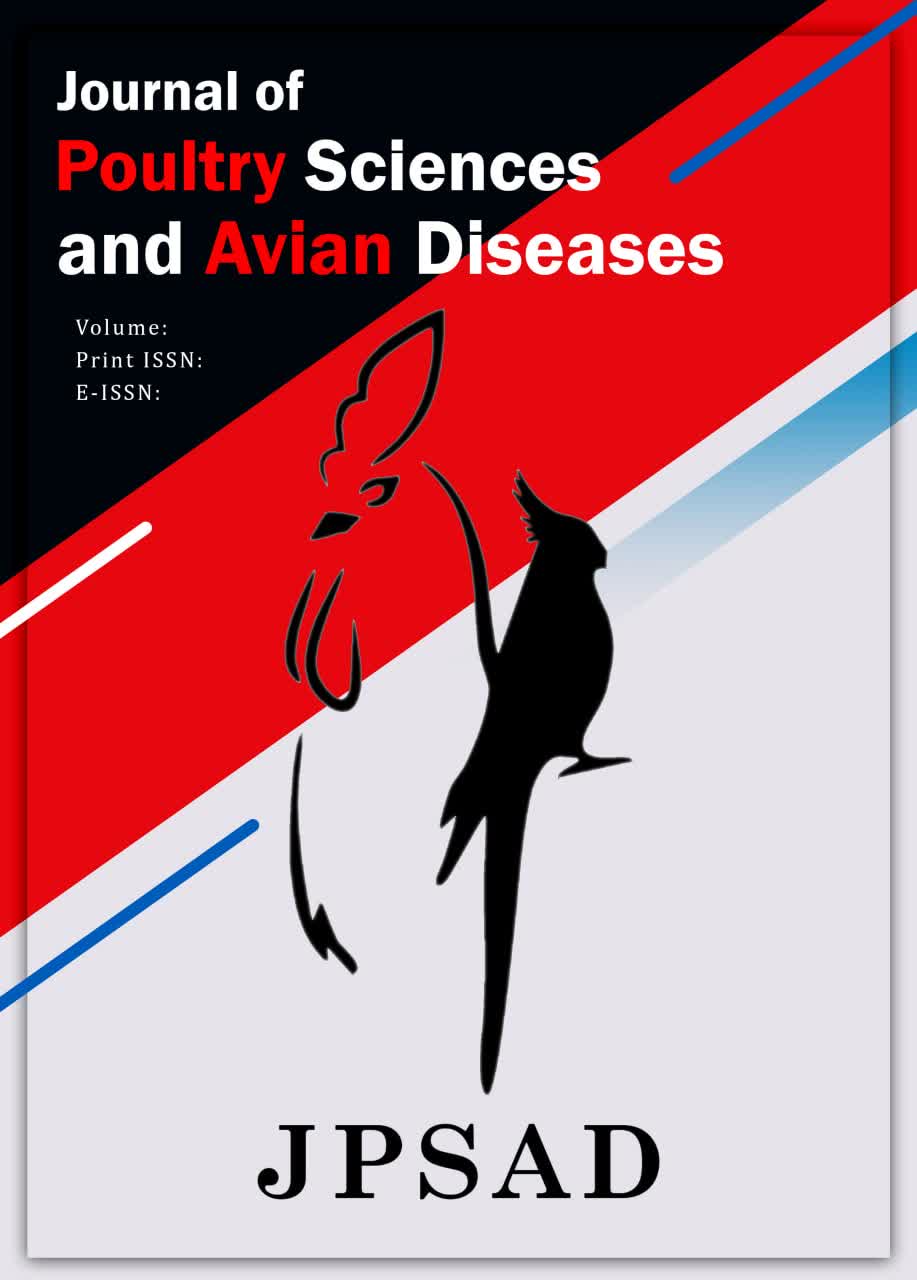Frequency of Salmonella Infection among Backyard and Commercial Duck Flocks in Iran, Serotyping and Drug Resistance Profile of Salmonella Isolated from Ducks
Keywords:
Salmonellosis, Antimicrobial susceptibility, Salmonella Enteritis, Salmonella Typhimurium, Salmonella Infantis, Duck, IranAbstract
Salmonella is one of the most important foodborne infections with worldwide distribution that infects humans and a wide range of animals. Poultry and poultry products are considered major sources of Salmonella infections for humans. Like chickens, ducks can play an important role in the transmission of Salmonella bacteria to humans. This study aimed to gain a deeper understanding of the frequency of Salmonella infection in ducks in Iran, as well as to determine the serovar and antimicrobial resistance patterns of Salmonella isolates. In this study, fecal samples were collected from four provinces of Iran. Each of the six fecal samples was pooled, resulting in a total of 352 samples. To isolate Salmonella, all samples were cultured using the standard techniques previously described. From a total of 352 stool samples, 20 Salmonella isolates (17.6%) were isolated and serotyped by using the slide agglutination test. Then, they were subjected to a polymerase chain reaction using Salmonella genus-specific primers and species-specific primers for serovars Enteritidis, Typhimurium, and Infantis. The disc diffusion method was used to determine the sensitivity of isolates to 21 antimicrobial agents. Serotyping identified 15 serovars of Enteritidis and three serovars of Typhimurium. Two isolates remained unknown. No isolate was resistant to ceftazidime, ceftriaxone, lincospectin, fosfomycin, and colistin. The resistance to other agents was variable. There were 17 resistance patterns to 21 antimicrobial agents. Among the resistant isolates, the occurrence of multiple resistance was very significant, as they showed resistance to at least one and up to 11 drugs. By comparing the findings of this study with those of other investigations in this field, it was shown that, like chicken flocks, Salmonella are circulating in duck flocks in Iran.
Downloads
References
Authority EFS. The European Union One Health 2022 Zoonoses Report. EFSA Journal. 2023;21(12). [PMID: 38089471] [PMCID: PMC10714251] [DOI]
Gast RK, Porter Jr RE. Salmonella infections. Diseases of poultry. 2020:717-53. [DOI]
Amavisit P, Browning G, Lightfoot D, Church S, Anderson G, Whithear K, et al. Rapid PCR detection of Salmonella in horse faecal samples. Veterinary microbiology. 2001;79(1):63-74. [PMID: 11230929] [DOI]
Hennessy TW, Cheng LH, Kassenborg H, Ahuja SD, Mohle-Boetani J, Marcus R, et al. Egg consumption is the principal risk factor for sporadic Salmonella serotype Heidelberg infections: a case-control study in FoodNet sites. Clinical infectious diseases. 2004;38(Supplement_3):S237-S43. [PMID: 15095195] [DOI]
Berghaus R, Mathis D, Bramwell R, Macklin K, Wilson J, Wineland M, et al. Multilevel analysis of environmental salmonella prevalences and management practices on 49 broiler breeder farms in four South‐Eastern States, USA. Zoonoses and public health. 2012;59(5):365-74. [PMID: 22650982] [DOI]
Shivaprasad H, Barrow PA. 11 Salmonella Infections in Ducks. Salmonella in domestic animals. 2013:221. [DOI]
WOAH. Terrestrial Manual. Salmonellosis, Chapter 3.10.7. World Organization of Animal Health. 2022.
Waltman WD GR, Mallinson ET. Salmonellosis. American Association of Avian Pathologists (AAAP). 1998:4-13.
Malorny B, Hoorfar J, Hugas M, Heuvelink A, Fach P, Ellerbroek L, et al. Interlaboratory diagnostic accuracy of a Salmonella specific PCR-based method. International journal of food microbiology. 2003;89(2-3):241-9. [PMID: 14623390] [DOI]
Arkali A, Çetinkaya B. Molecular identification and antibiotic resistance profiling of Salmonella species isolated from chickens in eastern Turkey. BMC veterinary research. 2020;16(1):205. [PMID: 32560721] [PMCID: PMC7304202] [DOI]
Agron PG, Walker RL, Kinde H, Sawyer SJ, Hayes DC, Wollard J, et al. Identification by subtractive hybridization of sequences specific for Salmonella enterica serovar Enteritidis. Applied and environmental microbiology. 2001;67(11):4984-91. [PMID: 11679316] [PMCID: PMC93261] [DOI]
Kardos G, Farkas T, Antal M, Nógrády N, Kiss I. Novel PCR assay for identification of Salmonella enterica serovar Infantis. Letters in applied microbiology. 2007;45(4):421-5. [PMID: 17897386] [DOI]
Humphries R, Ambler J, Mitchell S, Castanheira M, Dingle T, Hindler J, et al. on behalf of the CLSI Methods Development and Standardization Working Group of the Subcommittee on Antimicrobial Susceptibility Testing. 2018. CLSI Methods Development and Standardization Working Group best practices for evaluation of antimicrobial susceptibility tests. J Clin Microbiol. 2018;56:01934. [PMID: 29367292] [PMCID: PMC5869819] [DOI]
Henry RR. Salmonella infection in ducks. 2000.
Jamali H, Radmehr B, Ismail S. Prevalence and antimicrobial resistance of Listeria, Salmonella, and Yersinia species isolates in ducks and geese. Poultry Science. 2014;93(4):1023-30. [PMID: 24706981] [DOI]
Staji H, Rezaei S, Rassouli M, Namroodi S. Prevalence and genetic characteristics of Salmonella strains in wild Mallard ducks (Anas platyrhynchos) in Semnan suburb, Iran. Bulgarian Journal of Veterinary Medicine. 2017;20(4). [DOI]
Tsai H-J, Hsiang P-H. The prevalence and antimicrobial susceptibilities of Salmonella and Campylobacter in ducks in Taiwan. Journal of Veterinary Medical Science. 2005;67(1):7-12. [PMID: 15699587] [DOI]
Hanh TT, Thanh NT, Thoa HQ, Thi LT, Thuan LM, Ly NT. Prevalence of Salmonella spp. in poultry in Vietnam. Annals of the New York Academy of Sciences. 2006;1081(1):266-8. [PMID: 17135523] [DOI]
Asawy A, ABD EL-LATIF M. Some bacteriological and serological studies on enteritis in ducks. Assiut Veterinary Medical Journal. 2010;56(125):1-11. [DOI]
Adzitey F, Rusul G, Huda N. Prevalence and antibiotic resistance of Salmonella serovars in ducks, duck rearing and processing environments in Penang, Malaysia. Food Research International. 2012;45(2):947-52. [DOI]
Cha S-Y, Kang M, Yoon R-H, Park C-K, Moon O-K, Jang H-K. Prevalence and antimicrobial susceptibility of Salmonella isolates in Pekin ducks from South Korea. Comparative immunology, microbiology and infectious diseases. 2013;36(5):473-9. [PMID: 23618792] [DOI]
Kim H, Lee J, Jang Y, Chang B, Kim A, Choe N. Prevalence and antimicrobial resistance of Salmonella spp. and Escherichia coli isolated from ducks in Korea. Korean Journal of Veterinary Research. 2016;56(2):91-5. [DOI]
Dey R, Khan M, Nazir K, Islam M, Belal S. Epidemiological investigation on duck salmonellosis in some selected areas of Bangladesh. Bangladesh Journal of Veterinary Medicine. 2016;14(2). [DOI]
Abou Zeid MA, Nasef SA, Ali G, Hegazy A. A field study on biochemical changes associated with salmonella infection in ducklings. Journal of World's Poultry Research. 2020;10(2s):250-62. [DOI]
Kang X, Wang M, Meng C, Li A, Jiao X, Pan Z. Prevalence and whole-genome sequencing analysis of Salmonella reveal its spread along the duck production chain. Poultry Science. 2022;101(9):101993. [PMID: 35839552] [PMCID: PMC9289855] [DOI]
Chousalkar K, Gole VC. Salmonellosis acquired from poultry. Current Opinion in Infectious Diseases. 2016;29(5):514-9. [PMID: 27434307] [DOI]
Price JI, Dougherty 3rd E, Bruner D. Salmonella infections in white pekin duck. A short summary of the years 1950-60. Avian Diseases. 1962:145-7. [DOI]
Harsha H, Reshmi R, Varghese R, Divya PS, Rahiman KM, Hatha AM. Prevalence and antibiotic resistance of Salmonella from the eggs of commercial samples. Journal of Microbiology and Infectious Diseases. 2011;1(03):93-100. [DOI]
Flament A, Soubbotina A, Mainil J, Marlier D. Prevalence of Salmonella serotypes in male mule ducks in Belgium. Veterinary Record. 2012;170(12):311-. [PMID: 22266688] [DOI]
Owen M, Jorgensen F, Willis C, McLauchlin J, Elviss N, Aird H, et al. The occurrence of Salmonella spp. in duck eggs on sale at retail or from catering in England. Letters in applied microbiology. 2016;63(5):335-9. [PMID: 27561893] [DOI]
Yang J, Ju Z, Yang Y, Zhao X, Jiang Z, Sun S. Serotype, antimicrobial susceptibility and genotype profiles of Salmonella isolated from duck farms and a slaughterhouse in Shandong province, China. BMC microbiology. 2019;19:1-12. [PMID: 31477003] [PMCID: PMC6720067] [DOI]
Tran TP, Ly TLK, Nguyen TT, Akiba M, Ogasawara N, Shinoda D, et al. Prevalence of Salmonella spp. in pigs, chickens and ducks in the Mekong Delta, Vietnam. Journal of Veterinary Medical Science. 2004;66(8):1011-4. [PMID: 15353859] [DOI]
Binh DX, Lan DTM, Lan PTP, Minh NN. PREVALENCE AND VIRULENCE GENE OF Salmonella STRAINS ISOLATED FROM DUCKS IN NORTH VIETNAM. Suranaree Journal of Science & Technology. 2020;27(1).
Su Y-C, Yu C-Y, Lin J-L, Lai J-M, Chen S-W, Tu P-C, et al. Emergence of Salmonella enterica serovar Potsdam as a major serovar in waterfowl hatcheries and chicken eggs. Avian Diseases. 2011;55(2):217-22. [PMID: 21793436] [DOI]
Saitanu K, Jerngklinchan J, Koowatananukul C. Incidence of salmonellae in duck eggs in Thailand. Southeast Asian Journal of Tropical Medicine and Public Health. 1994;25:328-.
Ezatpanah E, Moradi Bidhendi S, Khaki P, Ghaderi R, Seyedan Jasbi E, Moghtadaee Far S. Isolation, serotyping and antibiotic-resistance pattern of isolated Salmonella from chicken of Arak. Iranian Veterinary Journal. 2013;9(2):88-96.
Asadpour Y, Mohammadi M, Pourbakhsh S, Rasa M. Isolation, serotyping and antibiotic resistance of Salmonella isolated from chicken carcasses in Guilan province. Iranian veterinary journal. 2014;9(4):5-13.
Peighambari, Morshed, Rima, Baziar, Sharifi, Aryan, et al. Salmonellosis in broiler flocks of Golestan province: Frequency, serogroups and drug resistance patterns of Salmonella isolates. Updates in veterinary microbiology. 2018;1(1):70-8.
Peighambari SM, Morshed R, Shojadoost B, Nikpiran H, Haghbinn Nazarpak H, Khakpour M, et al. Survey of non-typhoid Salmonella infections among some broiler flocks of Mazandaran and Gilan provinces, 2010-2015. Iranian Journal of Veterinary Clinical Sciences. 2019;12(2).
M'ikanatha NM, Sandt CH, Localio AR, Tewari D, Rankin SC, Whichard JM, et al. Multidrug-resistant Salmonella isolates from retail chicken meat compared with human clinical isolates. Foodborne pathogens and disease. 2010;7(8):929-34. [PMID: 20443729] [DOI]
Gieraltowski L, Higa J, Peralta V, Green A, Schwensohn C, Rosen H, et al. National outbreak of multidrug resistant Salmonella Heidelberg infections linked to a single poultry company. PloS one. 2016;11(9):e0162369. [PMID: 27631492] [PMCID: PMC5025200] [DOI]
Trongjit S, Angkititrakul S, Tuttle RE, Poungseree J, Padungtod P, Chuanchuen R. Prevalence and antimicrobial resistance in Salmonella enterica isolated from broiler chickens, pigs and meat products in Thailand–Cambodia border provinces. Microbiology and immunology. 2017;61(1):23-33. [PMID: 28042666] [DOI]

Downloads
Published
Issue
Section
License
Copyright (c) 2024 Javad Javidnezhad, Seyed Mostafa Peighambari, Jamshid Razmyar, Abbas Barin (Author)

This work is licensed under a Creative Commons Attribution-NonCommercial 4.0 International License.

















